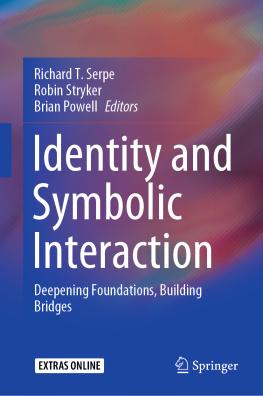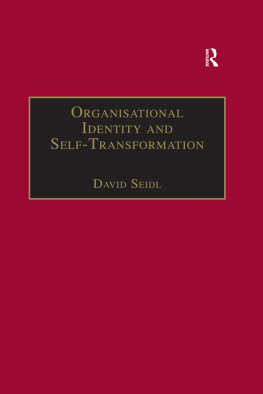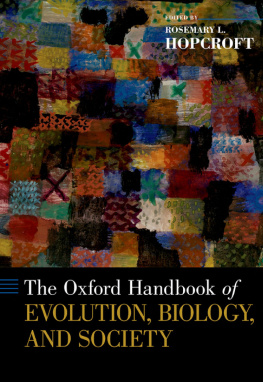Identity Theory
All people derive particular identities from their roles in society, the groups they belong to, and their personal characteristics. Introduced almost thirty years ago, identity theory is a social psychological theory in the field of sociology that attempts to understand identities, their sources in interaction and society, their processes of operation, and their consequences for interaction and society. The theory brings together in a single framework the central roles of both meaning and resources in human interaction and purpose. This book describes identity theory, its origins, the research that supports it, and its future direction. It covers the relation between identity theory and other related theories as well as the nature and operation of identities. In addition, the book discusses the multiple identities that individuals hold from their multiple positions in society and as well as the multiple identities activated by many people interacting in groups and organizations. And, it covers the manner in which identities offer both stability and change to individuals. Co-authored by the developers of the theory, this book accessibly presents decades of research in a single volume, making the full range of this powerful new theory understandable to readers at all levels.
IDENTITY THEORY
Peter J. Burke and Jan E. Stets


Oxford University Press, Inc., publishes works that further
Oxford Universitys objective of excellence
in research, scholarship, and education.
Oxford New York
Auckland Cape Town Dar es Salaam Hong Kong Karachi
Kuala Lumpur Madrid Melbourne Mexico City Nairobi
New Delhi Shanghai Taipei Toronto
With offices in
Argentina Austria Brazil Chile Czech Republic France Greece
Guatemala Hungary Italy Japan Poland Portugal Singapore
South Korea Switzerland Thailand Turkey Ukraine Vietnam
Copyright 2009 by Oxford University Press, Inc.
Published by Oxford University Press, Inc.
198 Madison Avenue, New York, New York 10016
www.oup.com
Oxford is a registered trademark of Oxford University Press
All rights reserved. No part of this publication may be reproduced,
stored in a retrieval system, or transmitted, in any form or by any means,
electronic, mechanical, photocopying, recording, or otherwise,
without the prior permission of Oxford University Press.
Library of Congress Cataloging-in-Publication Data
Burke, Peter.
Identity theory / Peter J. Burke and Jan E. Stets.
p. cm.
Includes bibliographical references and index.
ISBN 978-0-19-538827-5; 978-0-19-538828-2 (pbk.)
1. Identity (Psychology) I. Stets, Jan E. II. Title.
BF697.B855 2009
155.2dc22 2008046390
9 8 7 6 5 4 3 2 1
Printed in the United States of America
on acid-free paper
To our students and to the students who follow them.
Preface
This book had its beginnings almost fifteen years ago when we were on sabbatical at the University of Iowa. Over the years, we kept promising ourselves that we would get back to finishing it, but inevitably other research projects, journal articles, and book chapter obligations got in the way. Those who tend to write research articles will understand this. This past year we took the Nike slogan Just Do It! seriously and began a flurry of writing that culminated in this book. Ironically, the long delay has proven to be beneficial for this book. Over the years, our ideas and work in identity theory have matured theoretically and methodologically, and we have discovered some fascinating patterns given our empirical results. These insights keep us excited in forging ahead to discover more. Thus, on the one hand, the current book is much better, more developed, and more complete than it would have been if we wrote it many years earlier. On the other hand, in taking time out to write this book, we realized that there was much more that needed to be developed in identity theory. This realization makes it clear that we are working with a rich theory that has still more to say about the self and the self-society relationship.
We admit that an important reason behind writing this book at this time is to give scholars within sociology and across the social sciences a clear and organized statement on identity theory in sociological social psychology. To date, no such book exists. Over time, we became increasingly frustrated with this fact, so we decided it was time to provide one. Identity theory research has been scattered across numerous journals, book chapters, and conference papers, and we wanted to provide a place where scholars could obtain a clear and organized understanding of the theory. We think we have accomplished this goal although our readers are the ultimate judge of this. We also think it is important to make this theory more accessible to a wide array of scholars and even to those outside of the academy who simply wish to learn more about the self. We hope we have come close to meeting this loftier goal.
We received much help and encouragement in writing this book. We are especially grateful to the students in our graduate social psychology seminar at the University of California, Riverside. The students read each of the chapters and provided us with useful feedback. The book is better because of their insights, and we thank each of them, including Emily Asencio, Michael Carter, Allison Cantwell, Christine Cerven, Jesse Fletcher, Michael Harrod, Richard Niemeyer, Shelley Osborn, and Yvonne Thai. They are much relieved that this is finally in print!
We also are indebted to George McCall who wrote the foreword. We have always admired his work, and we have learned much from him. We also would like to thank Sheldon Stryker. The work that served as the basis for this book all began with Sheldons ideas about the nature of identities and the relationship between identity and society. His support and encouragement have meant a great deal. Together, Sheldon Stryker and George McCall were the earliest thinkers on identity theory in sociology. We hope we have added some important ideas to their already forward-looking thinking. And we hope that students of identity theory will continue to push this theory theoretically, methodologically, and empirically so that we have a better understanding of self and the intricate interplay of self and society.
Contents
Foreword
For more than thirty years now, Peter Burke has been perhaps the most insightful symbolic interactionist around, as his emphasis on the correlated meaning of identities and of behaviors (ideas consolidated for most of that time within an adaptation of William Powerss perceptual control theory) has allowed Burke not only to incorporate earlier thinking about identities (such as my own) but also to conduct a fruitful program of empirical research on these previously airy topics. Throughout this extensive period, Burke has enjoyed numerous coauthorships, but for nearly half of those years, his most consistent collaborator by far has been Jan Stets, his close colleague and wife. For these two to have jointly produced the current volume on identity theory is a most fortunate development for every potential reader.
The concept of identities (i.e., who one is) is best developed within structural symbolic interaction theories, of course, but Burkes differentiating fundamental insight lies in applying to identities Powerss perceptual control theorythat for human beings it is not the control of output or behavior that matters (as it does in most cybernetic theories) so much as the control of perceptions (or input). That is to say, humans maintain a steady and stable environment in the face of disturbances, and they do so by changing their actions (output) to make their perceptions (input) match a reference standard. In what seems a simple move, Burke makes measured identities serve as such a reference point, and from there he and his collaborators elaborate a rich and powerful theory. Understanding and accepting these ideas is difficult for most social scientists because they are so unfamiliar. Burke and Stets do a masterful job of explicating these basic ideas that are so central to their version of identity theory.
Next page










